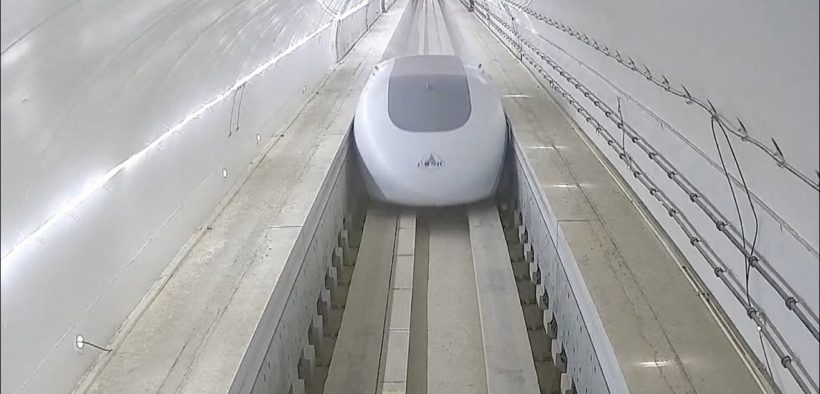China’s Hyperloop Beats Previous Record, Reaching Over 623 km/h During Testing

One important development in high-speed transportation is the China Aerospace Science and Industry Corporation’s (CASIC) maglev train. With the use of strong magnets that both push the train ahead and lift it above the tracks, this train minimizes friction and reaches previously unheard-of speeds. It runs on the maglev (magnetic levitation) technology.
Its latest accomplishment of breaking its own speed record—achieving nearly 623 kilometers per hour (387 miles per hour)—illustrates the outstanding advancements in this discipline. Furthermore, the accomplishment of the test in a low-vacuum tube shows that the maglev technology is feasible in terms of lowering air resistance and improving speed capabilities.
The daring objectives of CASIC, which include achieving speeds of up to 1,000 km/h (620 mi/h) and possibly even 4,000 km/h (2,485 mi/h) in the future, highlight the project’s inventive motivation. With such speeds, long-distance travel might be completely transformed, with trip times being significantly cut down and connectivity between cities and regions being increased.
In contrast, conventional high-speed rail systems—which include the idea of the hyperloop—face obstacles like expense, energy usage, and infrastructure integration. Although maglev trains can travel at high speeds, they also need special rails and a large initial investment, which presents financial and practical challenges to their widespread use.
The search for cutting-edge transportation technology continues in spite of these obstacles. The hyperloop dream is not over with the shutdown of Hyperloop One, a business that Elon Musk formerly supported. Projects like Italy’s proposed hyperloop system show that there is still a desire to transform transportation using fast, cutting-edge ideas.
The maglev train project in China offers the possibility of extremely fast travel and is a substantial advancement in transportation technology. Despite ongoing obstacles, innovation is being pursued with the goal of revolutionizing how we travel between cities and regions.

I am a dedicated student currently in my seventh semester, pursuing a degree in International Relations. Alongside my academic pursuits, I am actively engaged in the professional field as a content writer at the Rangeinn website.








